The Curse of Oak Island: Season 6, Episode 9- As Above, So Below
The following is a Plot Summary and Analysis of Season 6, Episode 9 of the History Channel’s TV series The Curse of Oak Island.
[SPOILER ALERT!]
Plot Summary
The Oak Island crew continues their massive excavation at Smith’s Cove, uncovering more of the U-shaped structure rediscovered the previous episode. Charles Barkhouse discovers the Roman numerals ‘XI’ and ‘XII’ carved into one of the structure’s arms.
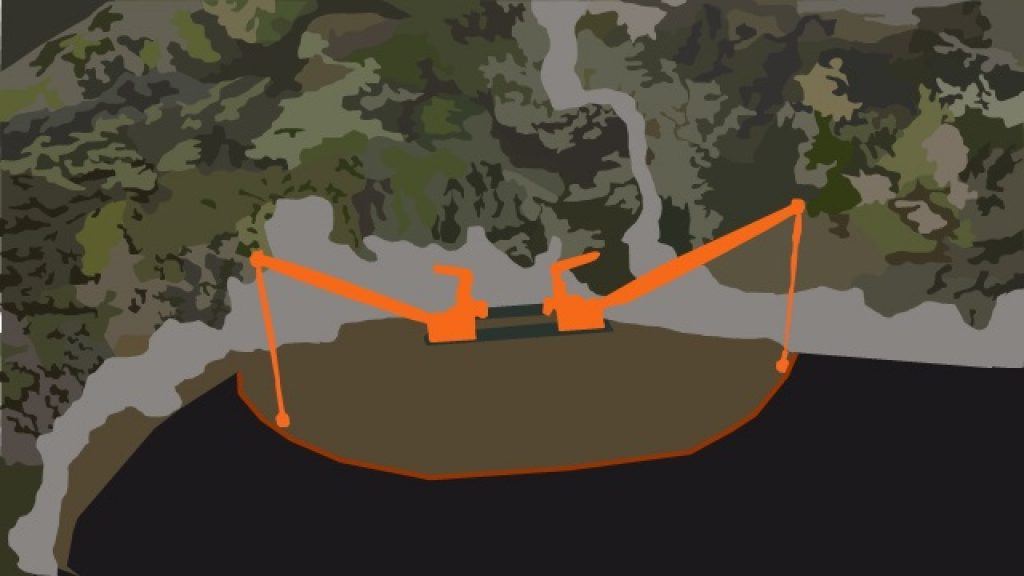
Terry Matheson observes that the U-shaped structure appears to be ensconced in “clay-rich till”, evoking the blue clay allegedly found in the Money Pit by the Onslow Company in the early 1800s.
Just before the U-shaped structure is completely uncovered, Gary Drayton examines it with his metal detector and finds it to be completely absent of metal. This finding accords with Dan Blankenship’s discovery that the structure appeared to be fastened together with wooden pegs. Rick Lagina, in a later interview, suggests that the absence of metal is perhaps an indication that the U-shaped structure is “very old”.
Upon fully uncovering the structure, the treasure hunters ponder whether the artifact constitutes the leavings the Truro Company or the original depositors. They agree that they ought to dig deeper in the area which the structure encloses.
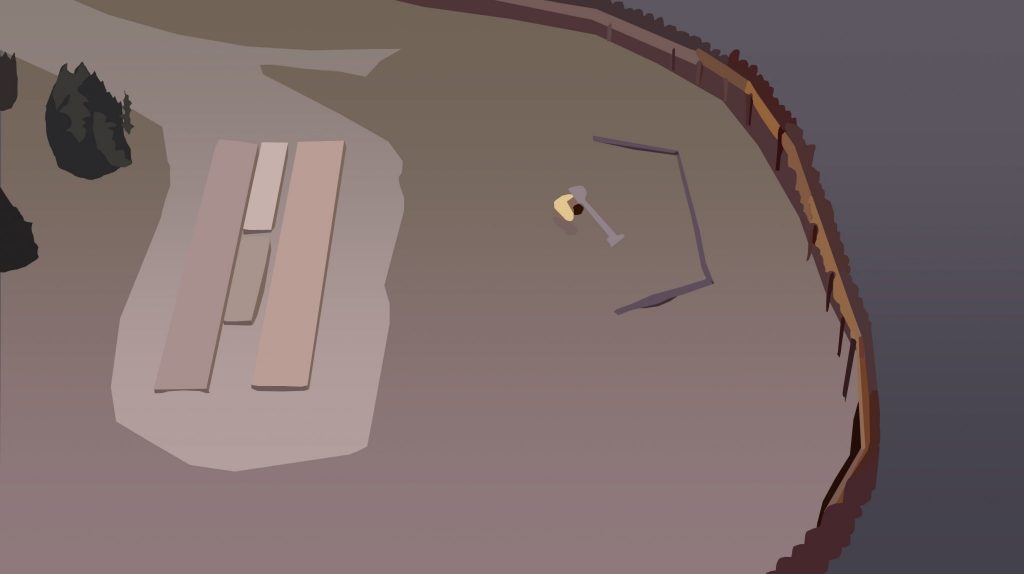
The following day, Marty Lagina meets with Laird Niven at Smith’s Cove. Using a measuring tape, the two men ascertain the length of the three sides of the U-shaped structure and determine the dimensions of the area which the structure encloses. We learn that the eastern arm of the structure measures 65’5’’ in length.
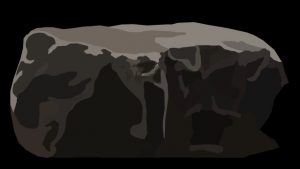
Meanwhile, the rest of the Oak Island team meet with Rob Hyslop and Ryan Levangie of Azimuth Consulting Ltd. in the War Room. There, Hyslop and Levangie present the findings of the 3D scan of the supposed 90-foot stone which they conducted in the previous episode. First, they suggest that the ‘N’ carved onto the rock’s surface might actually be an upside-down ‘A’. Then they inform the crew that they were unable to make out any additional inscriptions on the stone’s surface, but suggest that more advanced technology may be able to reveal these inscriptions if they indeed exist.
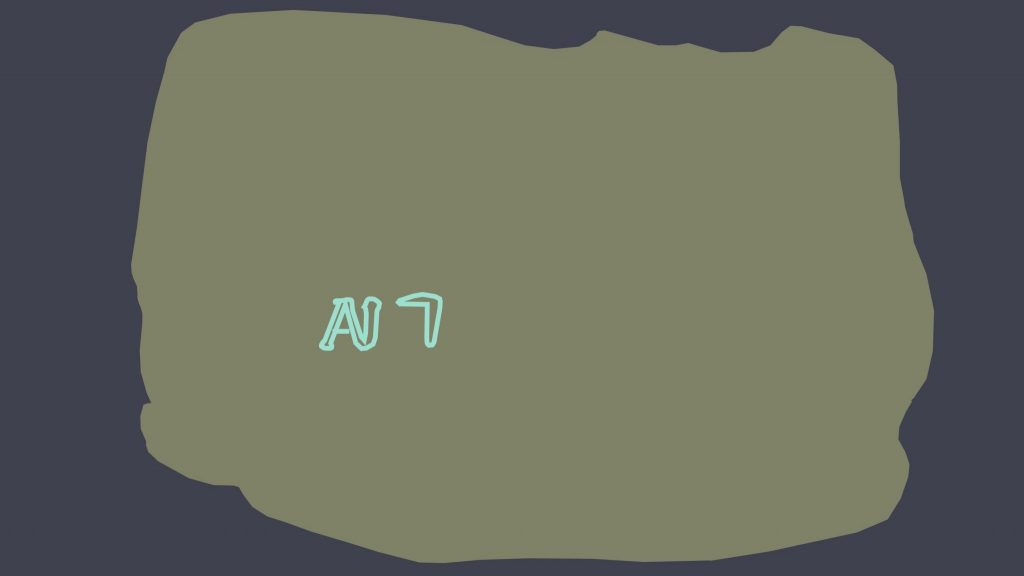
Later, Jack Begley and Gary Drayton meet with diver Tony Sampson at a nearby marina. Begley and Drayton board Sampson’s boat and have him ferry them to Apple Island, an area of interest on Travis Taylor’s star map, introduced on Season 6, Episode 7. At the coordinates indicated on Taylor’s map, the treasure hunters discover three large boulders.
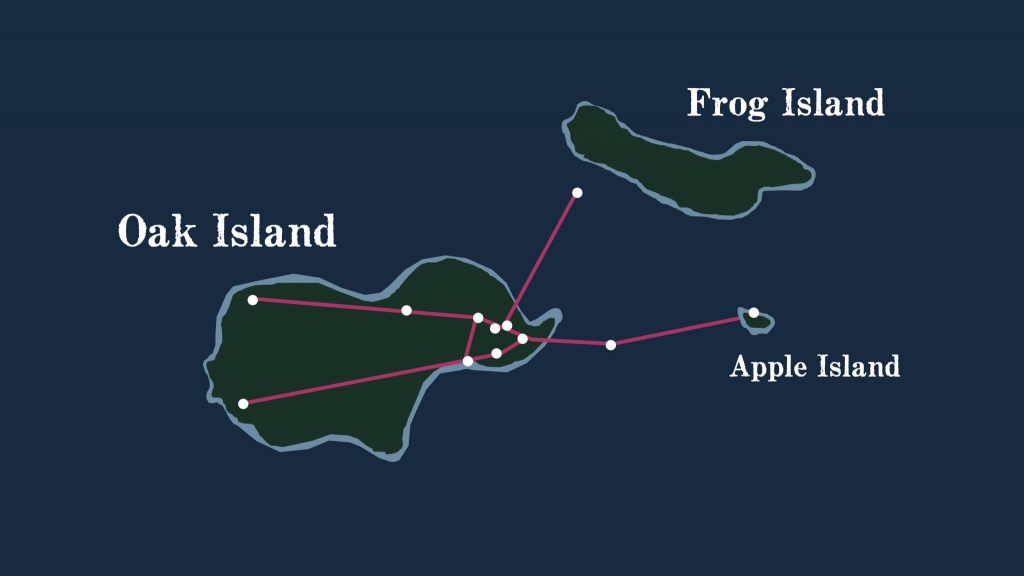
Following that discovery, the treasure hunters push on into the island’s interior. Gary Drayton pulls out his metal detector and quickly identifies a number of metallic targets, one of which is non-ferrous. The treasure hunters agree that they ought to apply for a permit which will allow them to dig for these targets.
Meanwhile, Rick Lagina, Dave Blankenship, Charles Barkhouse, and Doug Crowell head to the Money Pit. There, they watch as Choice Drilling sinks another hole, labelled K5.5, in an attempt to follow the supposed Shaft 6 tunnel to the location of the original Money Pit.
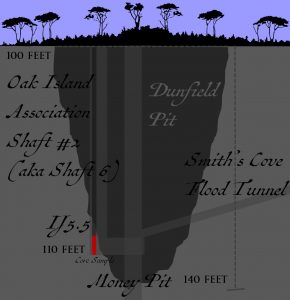 Core samples are brought up from the depths of 98-108 and 108-118 feet. The first sample contains what appears to be worked earth, but is devoid of wood. “Maybe they put the supports sporadically,” suggests Charles Barkhouse, referring to the men of the Oak Island Association who built the Shaft 6 tunnel in the mid-1800s. “[Maybe] it’s not a solid roof”.
Core samples are brought up from the depths of 98-108 and 108-118 feet. The first sample contains what appears to be worked earth, but is devoid of wood. “Maybe they put the supports sporadically,” suggests Charles Barkhouse, referring to the men of the Oak Island Association who built the Shaft 6 tunnel in the mid-1800s. “[Maybe] it’s not a solid roof”.
The second sample, on the other hand, is packed with wood from 118-124 feet, prompting the treasure hunters to congratulate themselves on successfully pinpointing the Shaft 6 tunnel. As the wood is located slightly deeper than expected, the narrator suggests that some of it might comprise timber from the collapsed Money Pit.
Later, Jack Begley and Gary Drayton sift through spoils from the Smith’s Cove operation, which have been washed and shaken by the wash plant. They quickly discover a coin dated 1963.
Meanwhile, Laird Niven, Terry Matheson, and Billy Gerhardt continue the excavation of the U-shaped structure. The bucket of Gerhardt’s backhoe bites into the top of a vertically-aligned timber, which Niven declares to be the third of its kind found that day. A subsequent examination reveals the timber to be a segment of a longer wooden wall composed of similar vertically-aligned planks. “This is totally undiscovered,” says Marty Lagina, having recently arrived on the scene with the other treasure hunters. In a later interview, Marty suggests that this newly-discovered wall might constitutes original workings.
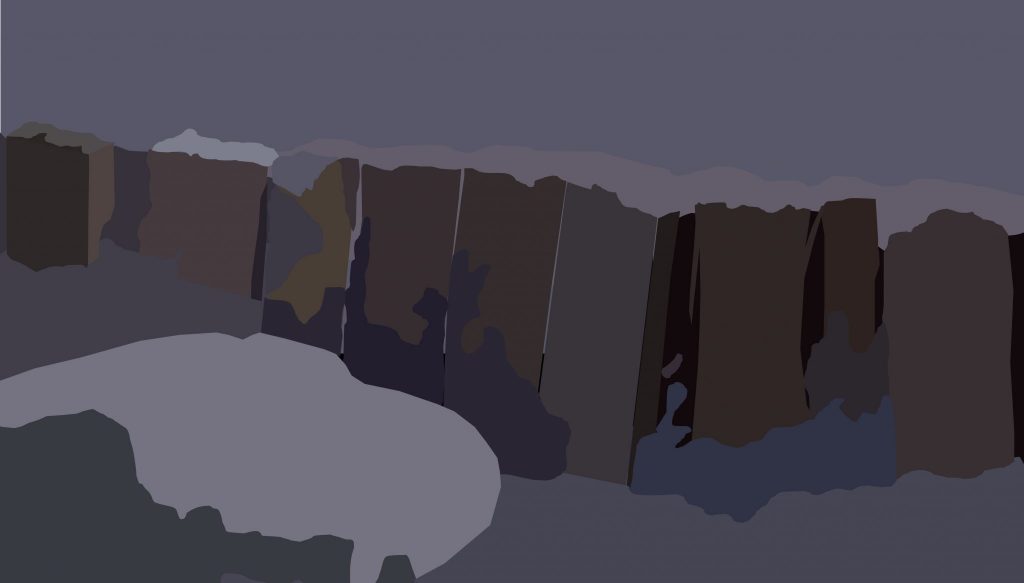
Analysis
Secrets of the U-Shaped Structure
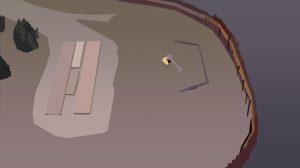
In this episode, the men of Oak Island Tours Inc. finally fully uncover the mysterious U-shaped structure first discovered by Dan Blankenship in 1971. The structure is entombed in what geologist Terry Matheson describes as “clay-rich till”, which Jack Begley suggests evokes the “blue clay” discovered in the Money Pit in the early 1800s by members of the Onslow Company.
If the till surrounding the U-shaped structure is indeed the same ‘blue clay’ found in the Money Pit, then two possibilities seem to present themselves:
- The structure constitutes the remains of the Truro Company cofferdam built in the summer of 1850 or the Halifax Company cofferdam built in 1866, the “clay-rich till” being either blue clay extracted from the Money Pit itself half a century prior by the Onslow Company or fresh clay taken from the source which supplied the original depositors with their own material. This theory corresponds with the findings of Dan Bankenship’s old partner, David Tobias, and engineer Les MacPhie, who, in the year 2000, carbon dated a piece of the U-shaped structure to 1860, plus or minus thirty years.
- A second possibility is that the structure is a relic of the original depositors, who employed the same blue clay they used in the Money Pit in its construction.
- In her 2015 book Oak Island Mystery Solved, Canadian author Joy Steele proposed a third theory which holds that the U-shaped structure was constructed by the original builders and was related to naval stores.
The Wall at Smith’s Cove
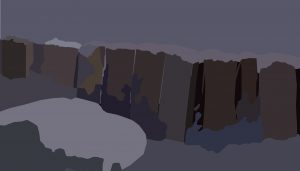
Near the end of the episode, Laird Niven, Terry Matheson, and Billy Gerhardt discover a wooden wall composed of vertically-aligned timbers buried beneath Smith’s Cove. Although the treasure hunters claimed that there were no records of previous searchers having discovered or constructed these walls, a chapter in Lee Lamb’s 2006 book Oak Island Obsession: The Restall Story, which is an excerpt from an article written by Oak Island treasure hunter Bobby Restall, includes the following passage:
“In Smith’s Cove we found bits of coconut fibre and evidence of earlier searchers’ work that is unrecorded. It took the form of old plank walls buried under the sands of the beach, also five vertical board boxes built to protect drill holes of past years.”
Photos which Lee Lamb sent this author show that at least one of these walls was composed of horizontally-aligned planks, not of vertically-aligned planks like those which comprise the wall discovered in this episode.
This underground wall at Smith’s Cove, which Terry Matheson suggested might have been used to “hold back water from entering the flood tunnels”, also evokes the wooden wall that Fred Nolan claimed to have discovered in the Oak Island swamp, for which the crew fruitlessly searched in Season 3, Episode 8. Nolan had described this structure as a 12-foot-tall, 12-foot-long wooden wall made of square, sawn timbers, and claimed that he had discovered it in the southern part of the swamp, a short distance from the beach, in 1969. In that episode, the narrator suggested that the swamp wall might be evidence that the swamp is man-made.
Want to Help?
Thanks for reading! If you enjoyed this article and would like to help support this website, please check out our online book store:







Leave a Reply